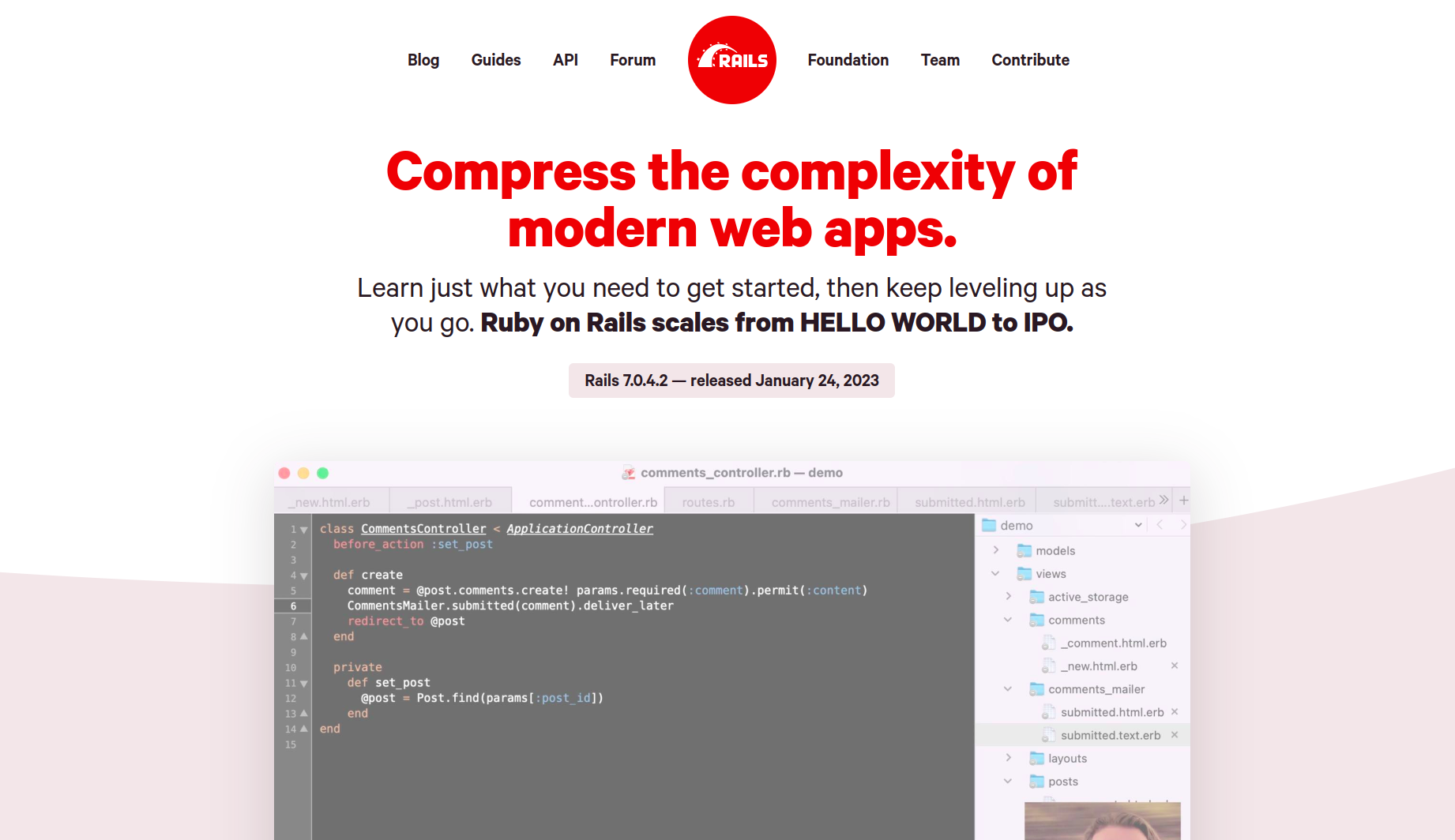Ruby on Rails: The Innovative Framework for Web Development

Ruby on Rails, commonly referred to as Rails, is an open-source web development framework written in the Ruby programming language. Since its introduction in 2005, Rails has become one of the most popular web development frameworks for building dynamic, scalable, and user-friendly websites.
What is Ruby on Rails?
Ruby on Rails is a Model-View-Controller (MVC) framework that provides developers with a clear structure for building web applications. The framework is designed to encourage the use of convention over configuration, meaning that developers can get started quickly without having to spend time on repetitive tasks or making decisions about how to structure their code.
Ruby on Rails has a large and active community of developers who contribute to the framework, regularly releasing updates and new features. Rails is known for its focus on developer productivity, with tools and features that make it easy to build web applications quickly and efficiently.
Pros of using Ruby on Rails
Rapid Development
Ruby on Rails is designed to help developers build applications quickly, without sacrificing quality or functionality. The framework’s conventions and libraries make it easy to build basic functionality, so developers can focus on adding value and customizing the application to meet specific business needs.
Flexibility and Scalability
Ruby on Rails is a highly flexible framework, allows developers to build web applications that can scale as the business grows. The framework is designed to make it easy to add new features and functionality, so businesses can quickly adapt to changing market conditions and customer needs.
Large Community
Ruby on Rails has a large and active community of developers, making it easy to find help and support when building applications. The community also contributes to the framework, regularly releasing new updates and features that make it easier for developers to build web applications.
Test-Driven Development
Ruby on Rails supports test-driven development, making it easier for developers to ensure that their applications are working as expected. The framework includes a suite of testing tools and libraries, making it simple to write automated tests that can be run with each build, reducing the risk of bugs and improving the overall quality of the application.
Cons of using Ruby on Rails
Steep Learning Curve
Ruby on Rails can be challenging for developers who are new to the framework, as it has its own conventions and ways of doing things. While the framework is designed to be intuitive and make it easier to build web applications, it can still take time for developers to become proficient in Rails.
Performance
Ruby on Rails is a dynamic language, which can result in slower performance compared to static languages like Java or C++. This can be a concern for businesses that require high-performance applications, such as e-commerce sites that need to handle a large number of transactions.
Complexity
Ruby on Rails is a complex framework, with a large number of components and libraries. While this makes it possible to build powerful web applications, it can also make it difficult for developers to understand and maintain the code over time.
Conclusion
Ruby on Rails is a powerful and flexible framework for building web applications. The framework’s focus on developer productivity and rapid development make it an attractive option for businesses that want to build applications quickly, without sacrificing quality or functionality.
However, Ruby on Rails is not without its challenges. The steep learning curve and complexity of the framework can make it difficult for developers who are new to Rails, while the dynamic language can result in slower performance compared to static languages.





